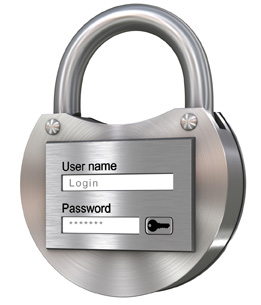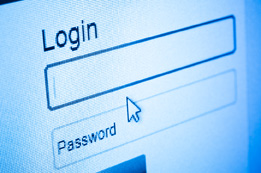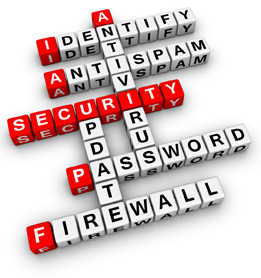Creating the Ultimate Password
Project Overview

iStockphoto/Thinkstock
Purpose
The purpose of this project is to help someone new to online banking see the importance of choosing a good password and to provide some samples of good passwords. You will use your understanding of combinations, permutations, and binomial theorem to analyze the quality of the passwords.
Process
Towards the end of the lessons, under Project Connection, you may be prompted to complete a part of the Module 8 Project. You can access the entire project from this page at any time.
Presentation
The most important part of your project presentation is to clearly explain and support your reasoning with relevant visuals and calculations.
Carefully check the Module 8 Project Rubric to be sure you are clear about the expectations for the project.
You can choose any format you prefer for the final presentation of this project. Some options include a written document, a virtual or real poster, a website, a video, an oral report, or a slideshow presentation. You must present the results of all activities in the project.

Hemera/Thinkstock
Project Introduction
Throughout this module you have seen different ways people can be uniquely identified by numbers. Numbers such as license plates, social insurance numbers, telephone numbers, PINs, and passwords are all part of your personal identity. It is very important to protect your identity because there are people who will try to steal your identity.
Identity theft has been growing more common in Canada. In 2010 the Canadian Anti-Fraud Centre reported 18 146 Canadian identity-fraud victims, resulting in more than $9 million in reported losses. These are just the reported cases!
In this project you will
- investigate and provide facts on identity theft
- investigate and provide tips on how to create good passwords
- determine the number of passwords when there are specified conditions
- discuss and apply conditions placed on passwords by websites
- create passwords from terms of expanded binomials
In all the following activities, ensure that you provide relevant calculations, diagrams, tables, or illustrations to support your solutions.
Activity 1: Facts and Tips
Why is a good website password so important? How can I protect my password online? To help answer these questions, complete the following:
- Research identity theft in Canada. Focus your investigation on identity theft/fraud on the Internet.
- Create a list of important facts Internet users should be aware of to protect themselves against identity theft.
- Research what banks recommend for an effective online password.
- Create a list of tips to create good online banking passwords.
- Make sure to reference all your sources.
Activity 2: Creating Passwords

iStockphoto/Thinkstock
What are some ways to create a good password? How much protection will a password provide? To help answer these queries, complete the following questions.
- Choose a word and number sequence with a personal meaning for you. The word may be your name, your pet’s name, a sports team, or something else. The number might be, for example, your birthday, a special year or age, an address, or a phone number.
- Determine how many possible passwords you could create from the word and number if you use all the digits and numbers. Assume there are no restrictions and that any letters or numbers can be repeated. Does order matter in a password? Show your calculations.
- Explain how the following conditions, imposed by a website, would affect the number of possible passwords you found in question 2. Show calculations to support your answers:
- The password must be between six and ten characters long.
- The password may not include repeating characters.
Which condition would allow the most password options?
Activity 3: Memorable Passwords
How will you create a password you can actually remember? To help answer this question, complete the following.
- It’s good to have some random numbers and letters strung together to create a password, but will you remember the password?
- Use the word you chose in Activity 2. You can place numbers before the word, after the word, or both before and after the word. How would the placement of numbers affect the password possibilities? Assuming you could use a three-digit number, describe how you would calculate the number of possible passwords for the three possible placements of the digits. State any assumptions you make.
- How many four-digit passwords are possible when no digits repeat? Is the order of the digits important in a password? If order is not important, how will that change how you solved the problem? How many different four-digit passwords are possible if the order of the digits is not important? Explain why there are more possible passwords when order is important than there are when order is not important.
Activity 4: Tricky Passwords

iStockphoto/Thinkstock
Why do some websites recommend that your password have nothing personally related to you, such as your birthday? It can be hard to remember a password that doesn’t have a personal relationship to you. A method to create a password that you probably never thought of uses your understanding of the binomial theorem.
Choose any term in the expansion of the binomial (r + 2s)4. How many different passwords can be created from using the coefficient, exponents, and variables in the term you chose? Make sure to show the expanded binomial and the term you chose as part of your solution.
Conclusion
Write a brief conclusion to your Module 8 Project. Include a personal reflection of what you learned from the project during and after completion. What are some other applications of permutations and combinations that you have encountered?
Project Assessment
Your Module 8 Project will be evaluated by your teacher using the checklist provided in the Module 8 Project Rubric. Read the rubric carefully. Make sure you have completed the requirements for each of the categories. You can print or save a digital copy of the Module 8 Project Rubric as a guide to help you complete your project.
Don’t forget to submit your completed Module 8 Project to your teacher at the end of Module 8.